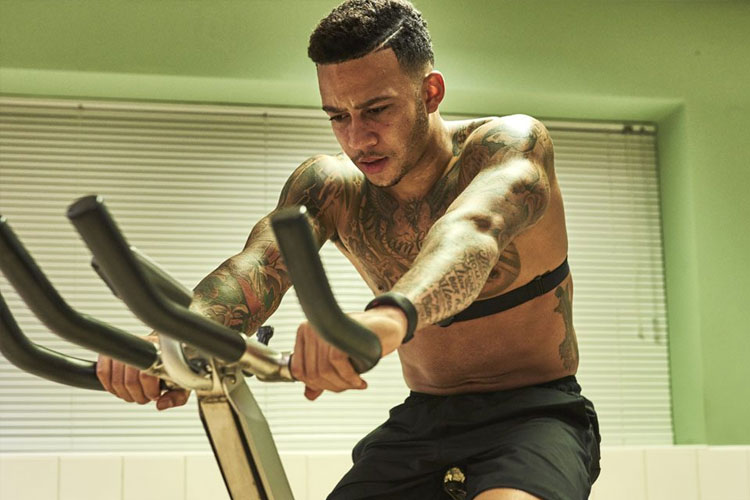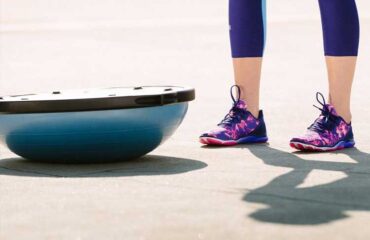Three times a week, she gets up early, slips on her running shoes, and ventures out into the cool air, running at a strong, steady pace. If it’s cold or rainy, she heads to the gym and hops on the treadmill. The routine is always the same: 30 to 60 continuous minutes at an even speed.
Jane’s neighbor, Susan, is equally dedicated, but she gave up jogging last year in favor of something a trainer told her is more effective: Instead of trotting steadily, she sprints as hard as she can for 30 seconds, rests for a couple of minutes, and then repeats this sprint-rest cycle for 20 minutes. Sometimes, she, too, does her workouts indoors. But like Jane, she never alters the structure of those sessions—it’s always sprint, rest, repeat.
Jane and Susan are both in great shape: They look fit, and they’re lean and healthy. Lately, though, Jane’s been hearing about the benefits of high-intensity interval training and has started to wonder whether Susan’s approach may be just what she needs to kick her fitness up another notch. For her part, Susan has begun to miss her mellower workouts and questions whether slower cardio might be the ideal way to give her achy joints a chance to recover.
Both women are onto something. Though some trainers argue that steady-state cardiovascular training is inefficient, others counter that this traditional approach to cardio exercise delivers indispensable benefits you can’t get from pushing the envelope every time you work out. And although plenty of researchers have recently trumpeted the value of fast, über-intense cardio (also known as high-intensity interval training, or HIIT), in practice, many fitness professionals have found that the system has drawbacks, particularly when practiced regularly over long periods.
“The truth is that both high-intensity interval training and steady-state cardio are effective in their own ways,” says exercise physiologist Jonathan Mike, MS, CSCS, from Albuquerque.
The best system of cardiovascular training, say Mike and many other forward-thinking fitness pros, probably isn’t the all-or-nothing approach toward which Jane, Susan, and many other exercisers gravitate. Rather, it’s a blend of both higher and lower-intensity cardiovascular training that’s tailored to your body and your goals.
The Players
Steady-state cardio and HIIT are convenient, versatile, and safe ways to develop your cardiovascular system. You can do them virtually anywhere with a minimum of equipment; you can switch up your activity at will (from running to swimming, say); and you don’t need a lot of coaching to do them effectively. In practice, however, the two styles of training are very different.
Steady-state cardio workouts are as simple as they come. Perform your activity at a steady, challenging-but-manageable pace (60 to 70 percent of maximal capacity) for 20 minutes or more, aiming for a heart rate of 120 to 150 beats per minute.
HIIT workouts are slightly more complex. Perform your activity as hard as you can (90 to 100 percent of maximal capacity) for a brief, set time period (usually two minutes or less), then back off for a predetermined rest interval (usually three minutes or less), and repeat the cycle four times or more.
Steady-state cardio is aerobic: It requires oxygen and is fueled mostly by stored fat. HIIT, by contrast, is anaerobic: The work intervals don’t rely exclusively on oxygen, and are fueled mostly by stored carbohydrates. (Counterintuitively, HIIT makes you breathe harder, and burns more fat, than steady-state cardio. More on that in a moment.)
Both types of exercise measurably improve a number of important health and fitness markers, particularly when you first take them up, says Mike. Your blood pressure drops, metabolismimproves, and VO2 max — a measure of the maximum amount of oxygen your body can process—goes up.
Specialize in one form or the other, however, and the benefits—and drawbacks—of each start to diverge in significant ways.
The Case for Cardio
No-frills, steady-state cardio has long been a cornerstone in training programs. And with good reason. The vast majority of physical functions—from digestion to breathing to everyday movements like walking, standing, and sleeping—are powered by the aerobic system.
Even activities that are anaerobic, including HIIT, depend on the aerobic system to help restore the body to a neutral state after each work interval—and after the workout itself. (That’s why anaerobic activity makes you breathe so hard, even though the work intervals themselves require minimal oxygen.) “The aerobic energy pathways are the limiting factor to anything we do,” says strength coach and physical therapist Charlie Weingroff, DPT, creator of the DVD series Training=Rehab, Rehab=Training. In other words, build a better aerobic engine, and you’ll get better at everything else.
Several common beliefs about the dangers of steady-state cardio have recently been proven untrue. Unless you log an excessive number of hours each week doing steady-state cardio, and do little else in the way of exercise, “it doesn’t slow you down, and it doesn’t make you weak,” says Mike Robertson, MS, CSCS, co-owner of IFAST gym in Indianapolis. And people who are concerned that high-repetition cardio will wreck their knees can rest easy. In people of normal weight with healthy joints, moderate jogging can actually strengthen knees, suggests a 2011 study of lifetime runners by Monash University in Australia.
Steady-state cardio, says Robertson, also causes unique adaptations in the heart. When you exercise at a high intensity (while interval training, for example), he says, your heart often beats so fast that the left ventricle—which stores oxygenated blood momentarily before pumping it out—can’t refill completely between contractions. At a slightly lower intensity (and, thus, a lower heart rate), the left ventricle fills completely before it contracts, which causes it to grow in capacity—and thus pump more blood with each contraction—over time. This triggers your heart rate to drop substantially, both at rest and during exercise.
That’s a good thing. A lower heart rate isn’t just an indication of a healthy and high-functioning cardiovascular system. It’s also indicative of high “parasympathetic tone” in the nervous system—an enhanced ability to relax, focus, and recover from stress, including intense exercise.
“So many people these days are stressed out, on the go, can’t relax, can’t shut down,” says Robertson. “And then they go to the gym and stress their bodies more with high-intensity workouts. But what they need is more steady-state, chill-you-out workouts.”
Critics of steady-state cardio exercise are right about a few things. It isn’t a cure-all. Beyond a low baseline level, you won’t build much strength, power, or muscle. And contrary to what many people believe, you won’t burn an appreciable amount of fat, either. Exercisers in a 2009 study conducted by researchers at Queensland University of Technology in Australia who did steady-state cardio five times a week for 12 weeks lost only 7 pounds on average—and nearly half of them lost less than 2 pounds. Steady-state cardio is also repetitive. Jog for 30 minutes and you may take as many as 5,000 steps. To some exercisers, that’s meditative; to others, it’s a bore.
It may also be risky, says sports medicine physician Jordan Metzl, coauthor of The Exercise Cure (Rodale, 2013). “The more you perform a single-movement pattern, the more you load up one area of the body, and the more likely you are to get injured.”
Still, for a low-key workout that reduces your stress level and improves recovery while delivering general health and an efficient aerobic engine, old-fashioned steady-state cardio is underrated and tough to beat.
The Hype Over HIIT
Interval training—in the form of sprints, shuttle runs, and timed lap swimming—has been a staple among athletes for at least a century. More recently, however, casual exercisers have caught on to its benefits as well. “Back in 1992, it was understood that if you wanted to be lean and healthy, you had to do cardio—hours of it,” recalls fitness journalist Lou Schuler, coauthor of The New Rules of Lifting Supercharged (Avery, 2012).
Starting in the late ’90s, however, a number of studies, including one by Japanese researcher Izumi Tabata, who popularized the Tabata Protocol, suggested that short, intense interval workouts may produce results similar to longer, slower cardio workouts in a much quicker time period.
Soon thereafter, Schuler and many other fitness journalists began touting the benefits of HIIT.
Does HIIT live up to the hype? In some respects. “If you’re trying to lose fat, it’s pretty clear that HIIT is a more effective tool than long-distance cardio,” Robertson says. Physiologists have yet to develop a full explanation for why this is, but one reason may be the so-called afterburn effect, in which the metabolism remains elevated for hours—and sometimes even days—after an intense workout.
The how isn’t important for coaches like Robertson and Mike. They just know that when a client wants to lose fat fast, HIIT is one of the best tools. One 1994 study at Laval University in Quebec, Canada, found HIIT was nine times more effective for losing fat than steady-state cardio.
Regular HIIT workouts also improve your ability to withstand the rigors of other types of interval training, adds Mike. The aching sensation in your muscles that accompanies a hard sprint (which results from burning carbohydrates for fuel) becomes less intense and subsides more quickly over time, allowing you to work at a higher intensity with less rest. Your capacity to transition smoothly from burning fat (before your workout and during rest periods) to burning carbohydrates (during your work intervals) and back again—known as your “metabolic flexibility”—improves with HIIT, as well. Together, these metabolic benefits bolster health and athletic performance, particularly in sports requiring short bursts of all-out effort interspersed with periods of reduced effort, such as basketball or martial arts.
All these benefits result from time-efficient workouts that are much shorter than your average lower-intensity cardio session. Just six HIIT workouts performed over two or three weeks, each lasting just a few minutes, produced measurable improvements in key markers of cardiovascular health, a 2012 study published in the Journal of Strength and Conditioning Research found. Regardless of your goals, it’s hard to argue against including at least some HIIT in your routine.
But just because some HIIT is beneficial doesn’t mean it’s all you need—or that more HIIT will necessarily give you more benefits. “One of the biggest misconceptions about HIIT is that it develops the aerobic system and the anaerobic system equally,” says Robertson. “But aerobic and anaerobic exercise actually place very different demands on your heart and your muscles.” Since the advent of HIIT, Robertson says he’s seen more athletes who are anaerobically fit but aerobically weak. “We’re talking Division I athletes with resting heart rates in the high 70s or low 80s”—the equivalent of a couch potato’s. “They’re fast and strong, but they gas out after just a few minutes on the field.”
Beginners may see some improved aerobic functioning with HIIT, concedes Robertson, but they quickly reach a point of diminishing returns. “After four to eight weeks,” he says, “you’re just grinding your gears and putting a lot of strain on your system at the same time.” Mentally and physically, he says, “high-intensity training can be downright brutal.”
A steady diet of HIIT can also stimulate a near-constant flight-or-fight response from your autonomic nervous system, says Robertson, resulting in a host of anxiety-like symptoms: racing heart, sweaty palms, difficulty sleeping, and an inability to sit still or focus. Over time, this hypervigilant state can impair recovery. “With HIIT, you have a higher probability for overreaching and overtraining, especially if you’re doing strength training as well,” Mike says.
That’s a recipe for aches and pains in the short term, stalled progress and burnout in the medium term, and injury in the long term.
Putting it all Together
So steady-state cardio may deserve a second look—even if some exercisers find it unexciting. And though HIIT is clearly effective in the short run, it can grind you down if you keep it up.
Given these pros and cons, what’s best for your workout?
The answer is a resounding … it depends. Beginners’ needs are different from those of competitive athletes. “Before you can decide on what type of cardio is best, you need a goal,” Weingroff says. “Then, the program you choose should reflect a balance of getting good at what you’re not good at and even better at what you are good at.”
Since aerobic fitness is the foundation for so many activities—in sport and life—Robertson suggests that all beginners emphasize steady-state cardio first, regardless of their long-term goals. Shoot for at least two sessions of aerobic activity weekly, and build up to 30 to 45 minutes at a stretch, for a period of two to three months.
Experienced exercisers seeking general fitness should take this simple test: Sit quietly, find your pulse, and count your heartbeats for one minute. If your resting heart rate is below 60, feel free to experiment with HIIT. “If it’s above 65,” says Robertson, “you need steady-state cardio training.” Drop other cardio activities and follow the recommendations for beginners.
Once your aerobic system is up to snuff, dial back the steady-state training and switch to HIIT. Make sure, however, that your resting heart rate stays below 65 beats per minute. If it shoots above 65, return to aerobic work and limit HIIT.
In general, because of the toll it can take on your body, avoid doing HIIT regularly for more than three months in a row. “We throw in a few weeks of HIIT at the end of our athletes’ off-season, to help them get ready for camp,” Robertson says. “But that’s all.”
This approach can be effective whether or not you’re peaking for a sport. A few months prior to a wedding or reunion where you want to look your best, sub in HIIT for steady-state workouts. After the event, back off the HIIT, return to steady-state for two or three more months, and alternate two- to three-month training blocks throughout the year.
Don’t make the mistake of trying to excel at HIIT and steady-state cardio at the same time. Remember, the two systems place different demands on your body. “Training in blocks is ideal,” says Weingroff. “You can’t get good at aerobic performance and HIIT at the same time.” A better approach is to “periodize” your workouts, or switch them on a regular basis. You’ll reduce your chance of injury, stave off boredom and fitness plateaus, and stay lean and healthy.
If you compete in sports, your priority during your in-season should be your activity or sport of choice. Marathoners should emphasize distance running; tennis players, tennis; and so on. You will likely compromise some aspects of your fitness during this period, but that’s OK. At the end of your competitive season, take a few days off to rest and recoup, then start filling in the gaps in your fitness routine. If you just ran a marathon, switch to something shorter and more explosive, like short-distance swim sprints; if you just competed in a weightlifting event, you might shift to a longer-duration activity, like cycling.
If you’re worried about losing your competitive edge during the time away from your sport, don’t be. In the long run, your game will only improve. “I’m a huge believer in cross-training for all my athletes in all sports: baseball players, runners, triathletes—doesn’t matter,” says Metzl, who is a year-round competitive athlete and sports-medicine doctor to professionals in nearly every sport. “When you specialize, your risk of injury goes up exponentially.”
Gym-goers can be extremists. They don’t just like their group cycling classes or weightlifting workouts, they love them—so much that they’ll keep doing them even long after the workouts have stopped making them feel, look, or perform better. “The biggest thing we need to respect,” says Robertson, “is that it’s not one extreme or another. There’s a time and a place for both low- and high-intensity training. You just have to figure out how to put it together into one seamless, integrated package.”
The first step? Recognize that the best workout program for you is probably the one you’re not doing right now.
Written by MyFitnessPal




